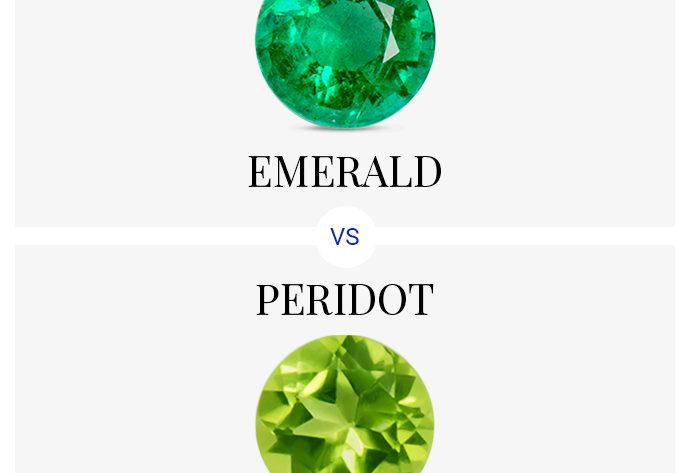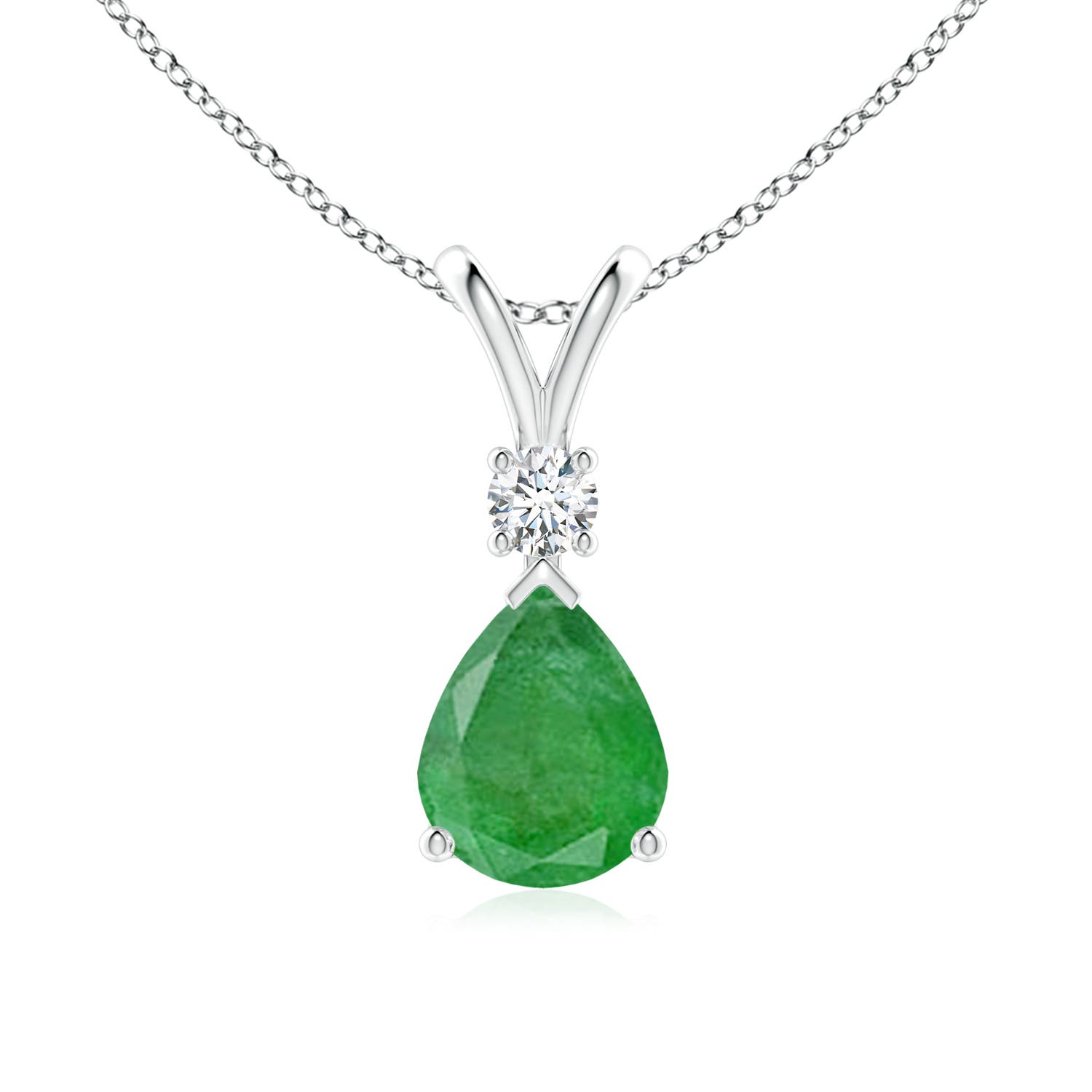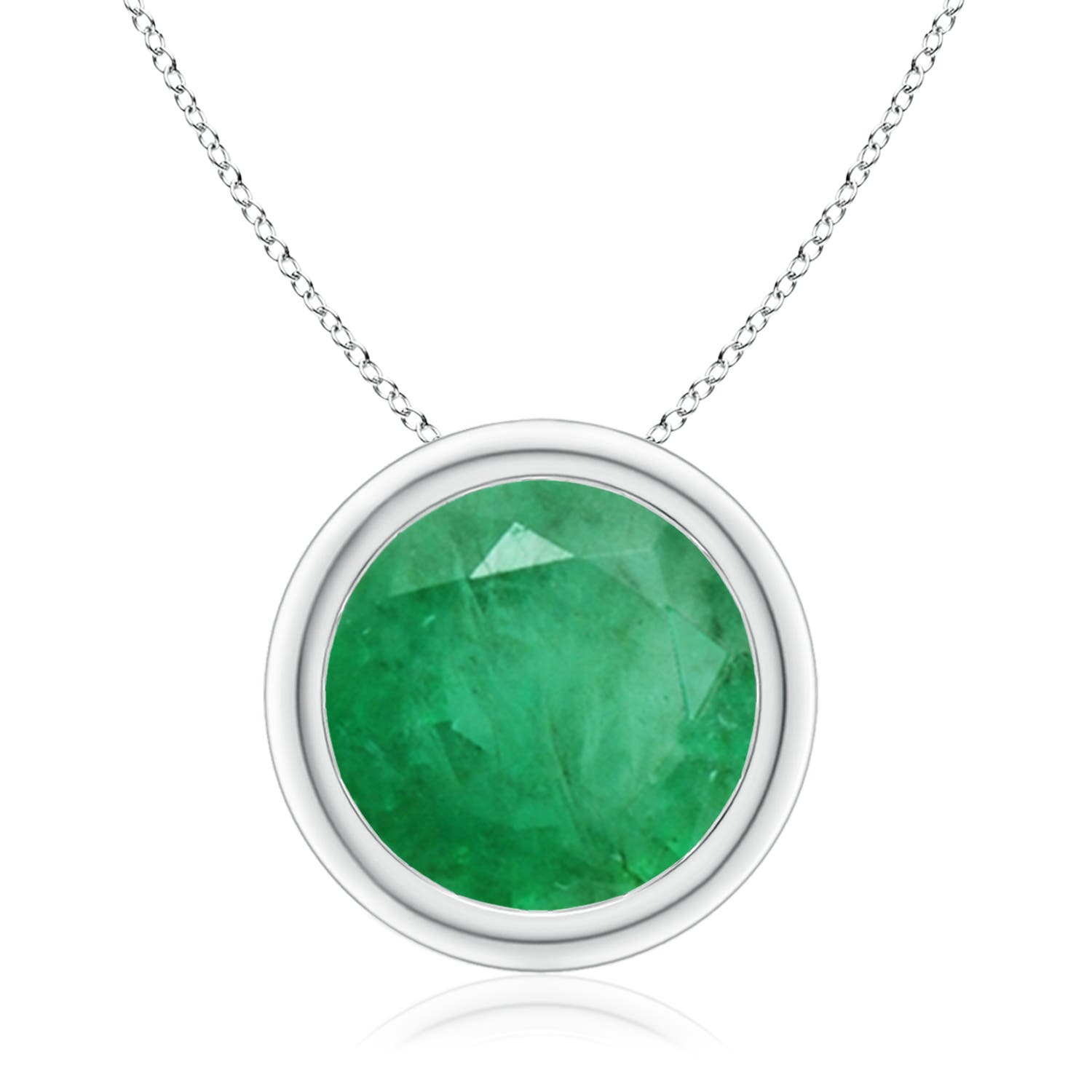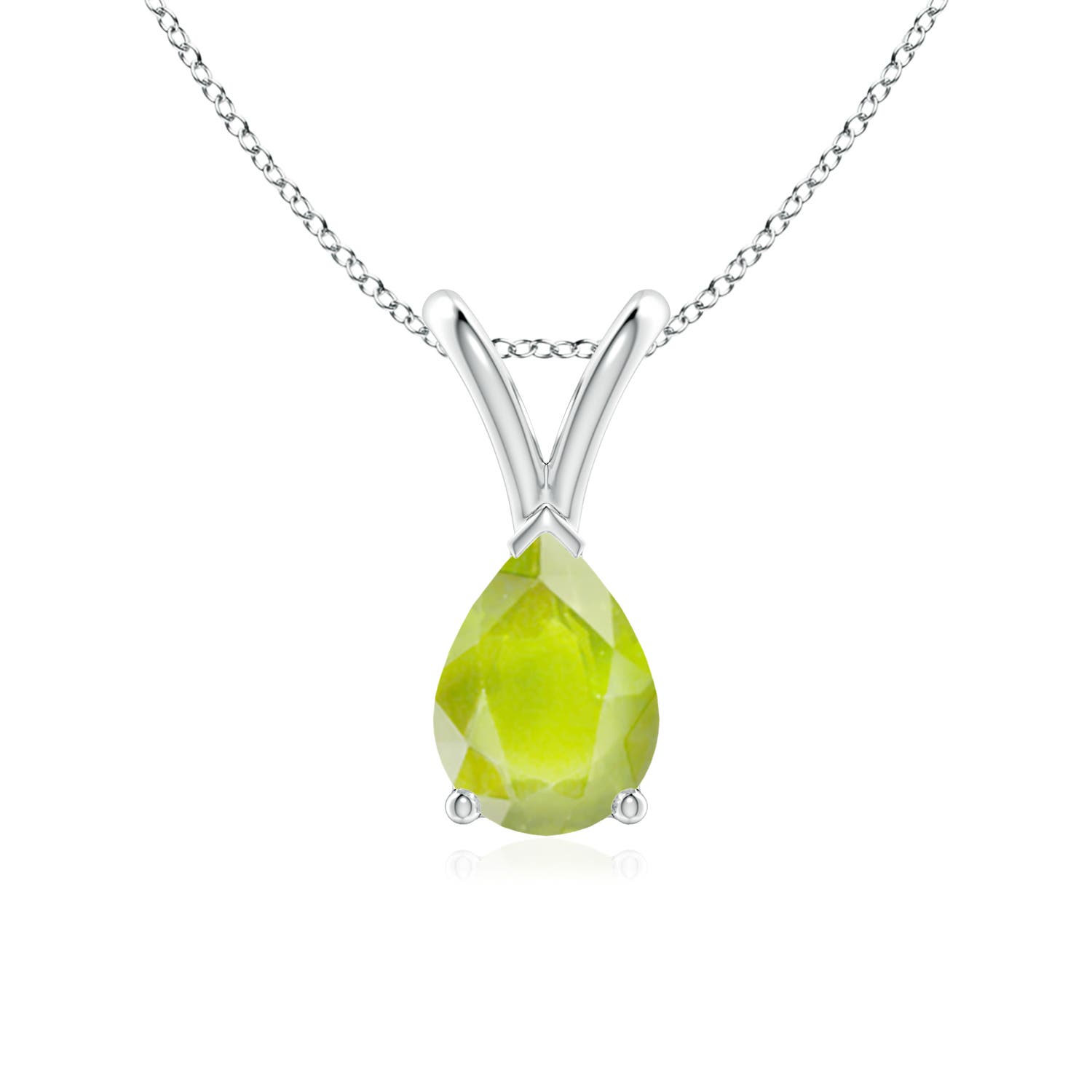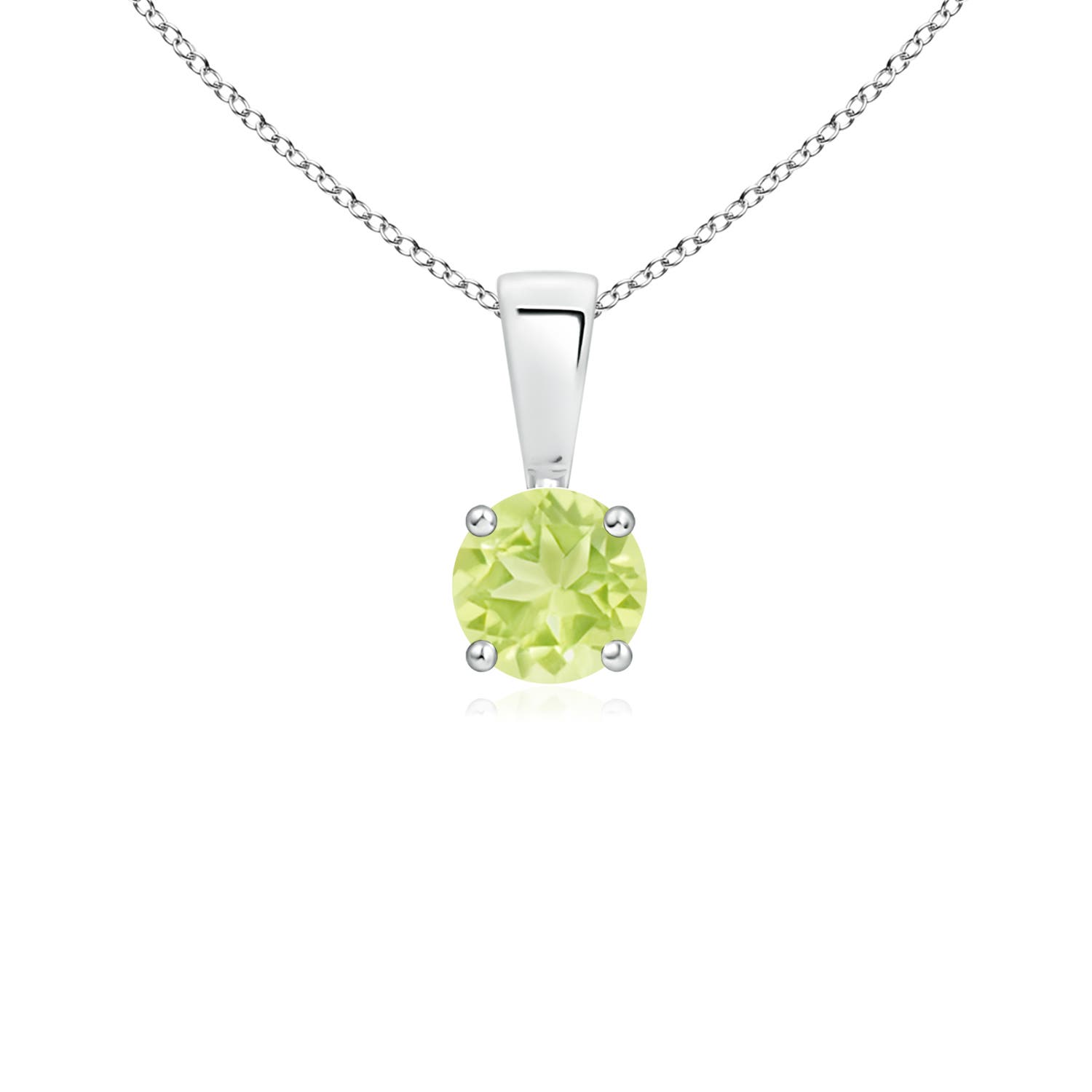Spring is soon approaching, and it’s impossible to not mention emerald. This super gem has been synonymous with all things that the season represents – rebirth, fertility and growth. But emerald isn’t the only green gem that the world desires. Peridot, with its distinct olive green hue, has also enjoyed a slow yet steady growth of popularity.
Today, we’re going to pitch these two gems against each other to explore their differences and strengths.
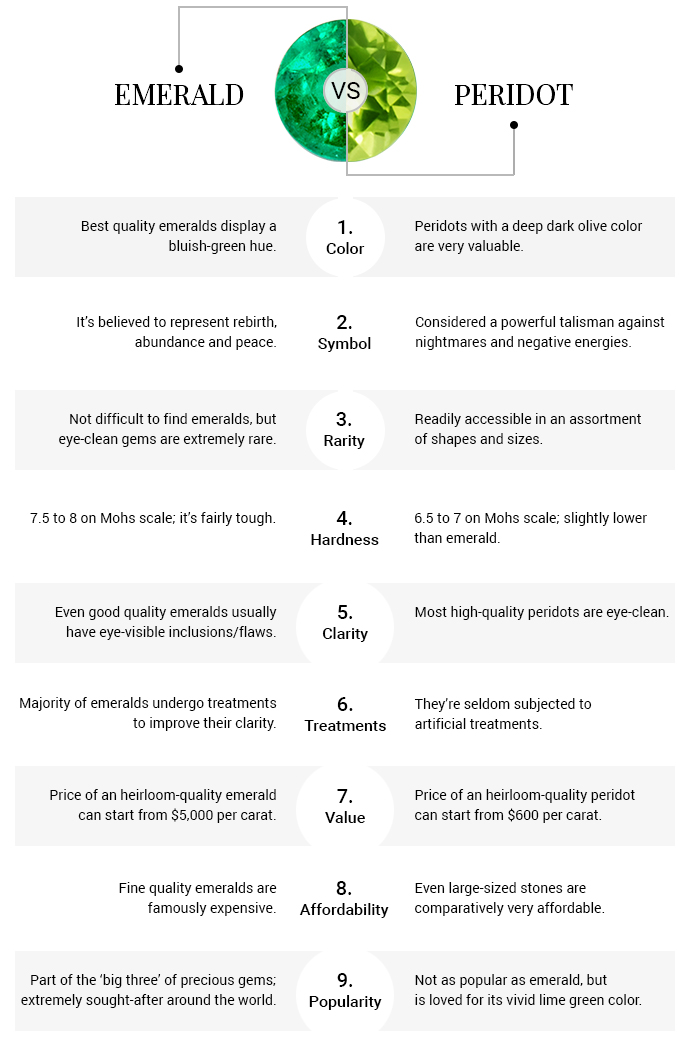
Peridot vs Emerald: What’s the Difference?
Elegant and sophisticated in every way, emeralds and peridots are simply a must-have! But is there any difference between the two or are they similar in more ways than we can imagine?
Let’s find out…
1. Color
- Peridot: Interestingly, the peridot is one of the few gems that is only available in one color – a lustrous olive green. That said, its shade and color intensity can vary depending on the amount of iron present in its chemical composition.
- Emerald: Best quality emeralds typically have a bluish undertone, which makes their color appear rich and intense. Deep green emeralds are also highly valued. The eye-catching hue of this gem comes from the trace amounts of vanadium and chromium.
2. Symbolism
- Peridot: Throughout history, peridots were used as a talisman to protect against negative emotions and nightmares. This stone was also said to promote good health, self-esteem, happiness, and attract abundance of wealth and success.
- Emerald: This gem has been frequently associated with rebirth, good fortune, growth, peace and balance. In the olden days, the emerald was also used to scare away evil spirits and was said to give the wearer the ability to see the future. Currently, it is considered the gem of rebirth and new beginnings.
3. Rarity
- Peridot: This gemstone is easily accessible, and can be found in a variety of sizes.
- Emerald: Emeralds are less common than peridots. Furthermore, due to the immense pressure under which they are born, eye-clean emeralds are incredibly rare.
4. Durability
- Peridot: It has a rating of 6.5 to 7 on the Mohs scale of mineral hardness. This means that the gem isn’t incredibly strong, but it isn’t delicate either. And while we recommend saving this jewel for special occasions, by following the correct care instructions, you can definitely consider wearing your peridots more regularly.
- Emerald: With a rating of 7.5 to 8, the emerald is certainly more durable and suitable for daily wear. That said, it needs to be treated with love and care because it is natural for majority of emeralds to have inclusions/flaws. Also, this gem can develop internal cracks if exposed to extremely high temperatures or dealt with a hard blow.
5. Treatment
- Peridot: This jewel is rarely subjected to any treatments. However, in rare cases, some stones may undergo epoxy filling to improve clarity.
- Emeralds: It is normal for majority of emeralds to undergo treatment. This is mainly done to reduce the appearance of flaws/inclusions and to improve the overall clarity. Oiling and opticon filling are the most common methods used for emerald enhancement.
6. Affordability
- Peridot: In comparison to emeralds, this gem is certainly more affordable.
- Emerald: This is a precious gem that has often been associated with royalty and luxury. It is also blessed with a spectacular hue, which is one of the main reasons for its popularity. So it doesn’t come as a surprise that the emerald is certainly more expensive than the peridot.
Good to Know
Keep in mind that majority of the emeralds, even the best quality stones, are most likely to have inclusions and flaws. This leaves the gem more susceptible to breakage. Even changes in temperature or rough impact can cause internal cracks in an emerald. Due to this, one needs to be careful while handling this precious jewel.
Verdict
As seen throughout this article, the peridot and emerald are undeniably two very different gems. We hope that by understanding these differences you find yourself in a better position to choose the one that best suits you.
Very often, emeralds with minute flaws are preferred over the flawless version as they are considered to be more authentic. But if you wish to own a naturally flawless emerald, be prepared to pay an extravagant price.
Shop Emerald Jewelry
Peridots, on the other hand, are seldom subjected to treatments as most of them do not have eye-visible inclusions. So expect brilliant clarity and a vibrant color from an heirloom quality gem.
In comparison to an emerald, peridot will also be considerably inexpensive (even if you opt for a three or four carat stone). It is therefore a great buy if you have a limited budget and want to enjoy a pop of fresh and vivid color. But if you are looking for a jewel worthy of being passed down to generations then an emerald is undoubtedly what you should pick.
Shop Peridot Jewelry
For more in-depth information about peridots and emeralds, please refer to these handy guides.
Also Read
- Aquamarine vs Blue Sapphire
- Blue Sapphire vs Blue Topaz
- Blue Sapphire vs Turquoise
- Citrine vs Yellow Sapphire
- Orange Sapphire vs Citrine
- Difference Between Orange Sapphire & Citrine
- Pink Sapphire vs Morganite
- Difference Between Pink Sapphire & Morganite
- Pink Sapphire vs Rose Quartz
- Pink Sapphire vs Pink Tourmaline
- Pink Sapphire vs Ruby
- Is Emerald More Expensive Than Sapphire & Ruby
- Sapphire vs Emerald
- Sapphire vs Ruby
- Sapphire vs Tanzanite
- Spessartite vs Orange Sapphire
- Teal Montana Sapphire vs Aquamarine
- Teal Montana Sapphire vs Blue Topaz
- Tsavorite vs Emerald
- Peridot vs Tsavorite
- Blue Topaz vs Aquamarine
- Blue Topaz vs Turquoise
- London vs Swiss Blue Topaz
- Black Agate vs Onyx
- Difference Between Black Spinel vs Onyx Ring
- Difference Between Onyx vs Obsidian
- Rhodolite vs Ruby
- Ruby vs Garnet
- Difference Between Garnet & Rhodolite
- Tanzanite vs Aquamarine
- Difference Between Common & Precious Opal
- Fire Opal vs Citrine
- Opal vs Moonstone
- Opal vs Opalite
- Which is More Expensive Opal Or Moonstone
- Morganite vs Moissanite
- Morganite vs Rose Quartz
- Fire Opal vs Orange Sapphire
- Natural vs Lab Grown Diamonds
- Diamond vs Moissanite
- Diamond vs Morganite
- Diamond vs. Non-Diamond Engagement Rings: Which One to Pick?
- Emerald vs Diamond
- Is Ruby Rarer Than Diamond
- Diamond vs White Sapphire
- Sapphire vs Diamond
























